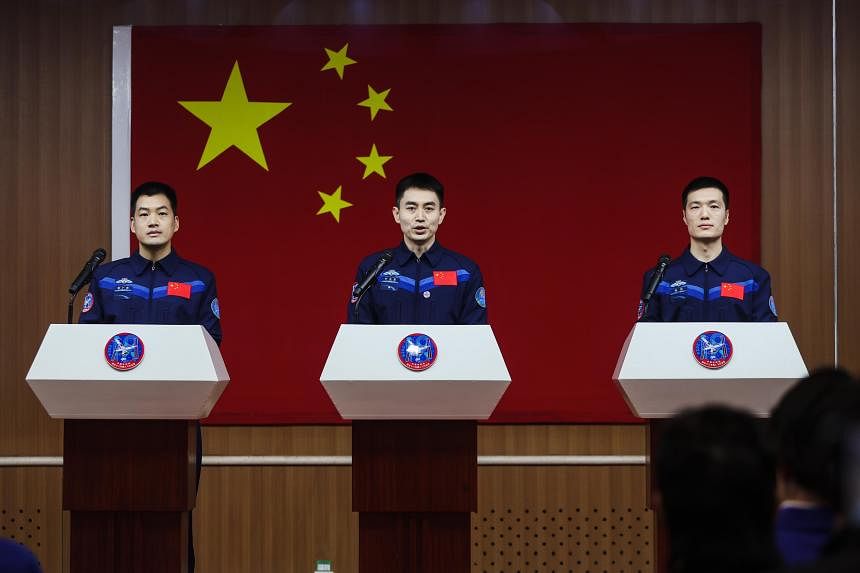JIUQUAN, China - China will send a fresh crew to its Tiangong space station on April 25, Beijing’s Manned Space Agency announced, the latest mission in a programme that aims to send astronauts to the Moon by 2030.
The Shenzhou-18 mission – crewed by three astronauts – is scheduled to take off at 8.59pm on April 25 from the Jiuquan Satellite Launch Center in north-west China, Beijing announced on April 24.
It will be led by Commander Ye Guangfu, a fighter pilot and astronaut who was previously part of the Shenzhou-13 crew in 2021.
He will be joined by astronauts Li Cong and Li Guangsu, who are heading into space for the first time.
Commander Ye described the launch as a “new beginning”.
“Facing the challenge, my two teammates and I are fully prepared. We are full of confidence in completing this mission!” he said at a press conference on April 24.
Mr Li Guangsu said he wanted to take a “good look at the beautiful blue planet, the splendid mountains and rivers of the motherland, and find the places that have nurtured me along the way”.
“I also want to see for my lovely child if the stars in the sky can really twinkle or not,” he added.
The latest batch of Tiangong astronauts will stay in orbit for six months, carrying out experiments in gravity and physics, as well as in life sciences.
They will also carry out a “project on high-resolution global greenhouse gas detection”, deputy director-general Lin Xiqiang of the China Manned Space Agency said, according to state news agency Xinhua.
“All pre-launch preparations are on schedule,” he said.
“They will work with other active astronauts to carry out the follow-up space station missions and to realise the country’s manned lunar landing.”
The Tiangong, which means “heavenly palace”, is the crown jewel of a space programme that has landed robotic rovers on Mars and the Moon, and made China the third country to independently put humans in orbit.
It is constantly crewed by rotating teams of three astronauts, with construction completed in 2022.
The Tiangong is expected to remain in low Earth orbit at between 400km and 450km above the planet for at least 10 years.
The new crew will replace the Shenzhou-17 team, who were sent to the station in October 2023.
Plans for China’s “space dream” have been put into overdrive under President Xi Jinping.
The world’s second-largest economy has pumped billions of dollars into its military-run space programme in an effort to catch up with the United States and Russia.
Beijing also aims to send a crewed mission to the Moon by 2030, and plans to build a base on the lunar surface.
China has been effectively excluded from the International Space Station since 2011, when the United States banned Nasa from engaging with the country – pushing Beijing to develop its own orbital outpost.
China’s space agency said on April 24 it had secured new international partners for its planned lunar base, known as the International Lunar Research Station, which Beijing has said will be completed by 2030.
The partners include Nicaragua, the Asia-Pacific Space Cooperation Organidation and the Arab Union for Astronomy and Space Sciences, Xinhua said.
Mr Yang Liwei, China’s first man in space, told media on April 24 that the country was “hoping and willing to cooperate with countries around the world on equal and mutually beneficial terms”.
He said he was “personally looking forward” to greater cooperation in space with the United States.
“Because lots of the astronauts in the US are also our good friends, and we are all familiar with each other,” he added. AFP

